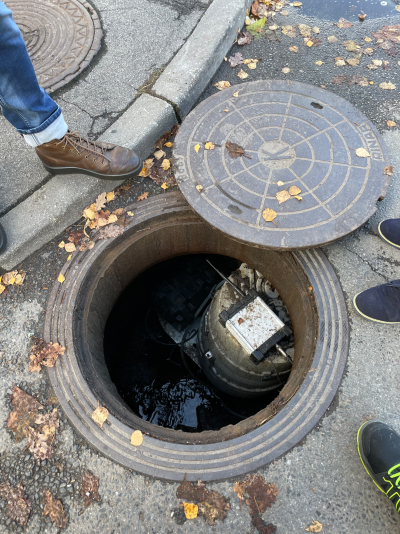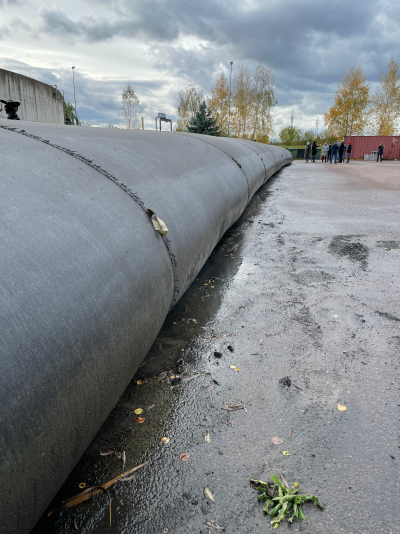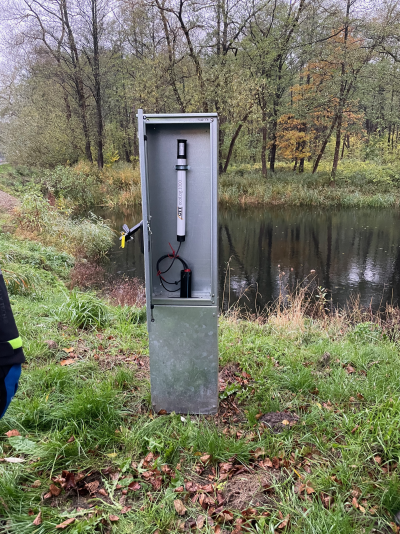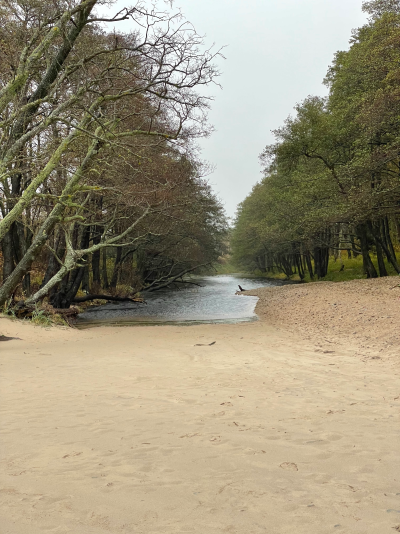The NOAH project is part of the EU’s InterReg program for the Baltic Sea region. It was launched to protect the Baltic Sea from leakage of untreated sewage during floods in urban areas. In the NOAH concept development process, stormwater management methods, spatial planning and real-time control of municipal sewage systems were tested in selected pilot areas.
For over a year, the NOAH team only met online. The inability to travel made the cooperation very difficult, because an important goal of international cooperation was to hold many workshops at the places of implementation of new control tools for the rainwater and combined sewage system.
On October 19-21, 2021 the first team meeting after a long time took place. The aim was to get acquainted with the results of the project obtained in Latvia, in three cities that are beneficiaries of the project: Orge, Jurmala and Liepaja (Liepaja).
Jurmala
Jurmala is a summer resort with 50,000 inhabitants, adjacent to the Latvian capital of Riga. On the basis of the Law “On Local Governments”, in order to ensure the quality management of drainage systems and storm water drainage in the administrative territory of Jurmala, the successful implementation and organization of flood protection measures, as well as to provide civil protection measures to prevent flooding, the City Council handed over to the municipal company the “Jūrmalas ūdens” water supply system; operation of the municipal-owned drainage systems.
The stormwater management system consists of a sewage system and ditches that flow into the Lielupe River. There are fragments of a combined network and several sections of pipes with inverted slopes, which hinders the outflow of rainwater. In the city, 4 flow meters in the sewage network, 3 rain gauges and one automatic sampler collecting rainwater samples were installed.
 Photo 1 Manhole with installed monitoring system, sampler and data transmission device
Photo 1 Manhole with installed monitoring system, sampler and data transmission device
The measurement results are sent via the cellular network to the central unit. The problem with the country simulation is that it covers larger parts of the country and is therefore less accurate. NOAH models with greater accuracy. The data is refreshed every 40 minutes and it is possible to compare it with the forecast.
The problem in collecting reliable data turned out to be the quality of the GSM connection and the clogging of channels that causes interference.
Thanks to the obtained data, a pump was installed at the outlet of the rainwater sewage system, where the rainwater flow is particularly polluted. The pumping is controlled in such a way that the water stream in dry weather is discharged into the sanitary sewage system, but much cleaner water during rainfall can flow to the receiver. The reduction of pollutants discharged into the environment was estimated at 70%.
Team members also visited water treatment plants and sewage treatment plants. The city uses groundwater resources. Treatment consists in removing iron from the water, but also due to the intrusion of saline waters, reverse osmosis technology is used.
The sewage treatment plant was established in 2006 thanks to a subsidy from EU funds. It has a capacity of 10,000 m3 / day, it is a mechanical and biological treatment plant, without the need to use the third stage for removing biogens. Sewage sludge is subject to dehydration processes. The treatment plant is equipped with both a centrifuge and a press. Due to the energy consumption, the press is used more often. The additional drainage method is currently being tested. The sediment is placed in semi-permeable membrane bags, allowing the water to drain away under the influence of gravity and pressure.

Photo 2 Sludge dewatering membrane sleeve.
Liepaja
Liepaja has 68,000 inhabitants. The waterworks in Liepaja are responsible not only for water supply and sewage collection, but also for the management of rainwater in the city. The catchment area is planned to be expanded in the future, the current capacity of the system is insufficient. A canal connecting the city with the sea runs through the city. Thanks to the NOAH project, meters for filling the channel and the flow in the channel were installed.

Photo 3 Flow meter control box in the channel located on the edge of the channel
Moreover, the simulations carried out showed the optimal solution for controlling the sewage network in such a way as to prevent the overflow of sewage into the sewer and, consequently, into the sea.

Photo 4 The place of the mouth of the canal. In the absence of rainfall, the water will not drain into the sea
Under NOAH, 3 monitoring points were installed in the canals. However, there are problems with the power supply, and the batteries are replaced more often than was originally designed. As in Jurmala, the measuring system also requires very thorough and systematic cleaning.
Simulation of tap water pollution – biological pollution
The staff of the Technical University of Riga presented the WATSON project on pollution monitoring (“Online quality monitoring and early warning system”). It is based on the simulation of microbial contamination of tap water and the measurement of basic parameters. The aim of the project is to build a system that would not only detect contaminants early, but also determine their origin. The system is fed with tap water, to which pollutants are dosed: water from the rainwater canal, water from the retention tank, etc. The mixture flows through the online monitoring system where basic parameters such as turbidity, electrical conductivity, temperature, redox are measured. There is also online monitoring of microbiological parameters by means of a device counting cells in water, with a contamination detection level of 5%. Current microbiological monitoring methods have the weakness of taking time, so the point is to shorten it even at the expense of accuracy.
The project team aims to develop an automatic system that, by combining many monitoring parameters, will lead to the determination of the type of pollution, its cause and possible effects (“biological contamination fingerprint”). Such a solution can also be used to monitor the biological balance of water in the network so that it does not need disinfection.
A commercial product which is a monitoring and early warning service is already being tested.
Ogre
Ogre is a town southeast of Riga with 23,000 inhabitants. The pilot site is located on the Ogre River. The drainage of rainwater is organized by a sewage system and a network of ditches. The solution implemented by NOAH is to monitor the flows in the Ogre River, which poses a flood risk for the city. Based on the collected monitoring data (national and local system), the flow is modeled and forecasts for 24 hours.
The NOAH project is coming to an end. The final stage will be the publication of a handbook describing the methodology and good practices to be used by cities in the Baltic Sea region.



